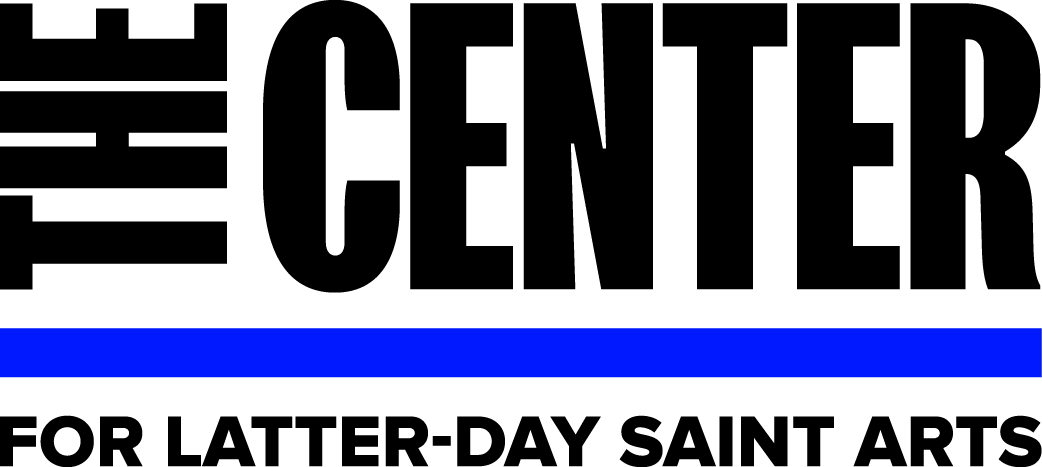Outside Zion Looking In
by Michael LaBianca
I am not a Latter-day Saint; I consider myself Mormon-adjacent as I married into a Latter-day Saint family. This family, like many LDS families I have come to know during my married life, have an active relationship to the arts. So I took great interest in attending the Materializing Mormonism exhibit when it opened at the Mesa Contemporary Arts Museum near our Phoenix home.
The breadth of the exhibit is quite large, with art that may be simply interpreted (art I am partial to!) and that which requires further contemplation. I found myself drawn to reading each of the labels to better understand the art I was viewing. I had the added benefit of meeting Ashlee Whitaker Evans, one of the show curators, while touring the exhibit. Ashlee shared some of the experience of putting up this exhibit and the process of describing each work (renderings which made the viewing all the more engaging).
“My wife’s family embraces art, everyone sings (all comfortably, and many beautifully), many express artistry in crafts and interests. But my understanding of Latter-day Saints is not spiritual, but cultural. ”
I so enjoyed the show! I am by nature interested in LDS culture; I feel I have truly benefited from my exposure to it. My father-in-law, when asked what is the basis of his devotion, will often answer to the effect that it helps him be the kind of man he wants to be. I often think about this, and how insightful and enlightening his belief is.
My wife’s family embraces art, everyone sings (all comfortably, and many beautifully), many express artistry in crafts and interests. But my understanding of Latter-day Saints is not spiritual, but cultural. The exhibit was appealing in that way, with so many accessible themes of family, place, and people (e.g., Jesus [Brian Kershisnik, Jesus and the Angry Babies], Mother in Heaven [Emily Hawkins Mother in Heaven Diptych]), Brigham Young [Edward Bateman, Brigham’s Oats]).
Emily Fox King’s Bless the Hands, is one of a number of the pieces I particularly enjoyed. In it she stylistically and humorously interprets an idyllic family meal. Seen from above the people gathered around the table represent a one-world family, engaged with each other, and in the instance of one child laying upon the table edge, engaging directly with me (the viewer). The scene is resplendent, flowers grace the table, and meats and vegetables and bread are served. Even the cat has a place at this opulent feast of the senses, with various plaids and stripes laid into the Hanna Andersson matching outfits worn by many—contributing to the well-being and prosperity this loving scene evokes.
I am awestruck by the beauty of the Utah landscape. When visiting Utah I often wonder about Provo’s Utah Lake, which sits quietly below the Wasatch, unbothered by much boat traffic. Collin Bradford’s digital film installation, A Burning Hope (literally a burning hope set in the lake) is said to evoke the core values of the church, hope, faith, and charity. While understanding hope is a fundamental aspect of religion, I took away from it a different perspective – thinking at once about the future of the valley envisioned by Brigham Young and the Latter-day Saints pioneers and the growth that is witnessed relentlessly advancing across the landscape today. What is the future of this place, so beautiful, but fragile. Where is the hope? The burning sign seems ominous from this perspective.
Other landscapes, such as Kent Christensen’s Secrets of the Great Salt Lake mash-up tryptich of landscape and LDS cultural touchstones is both humorous and insightful. This historical story is as warped timewise as the sandstone of Utah, which is represented, along with a whale (evoking Utah’s geologic past when it was part of the Paleo-Ocean), and dinosaurs (somewhat more recent inhabitants of the region). The comical nature of the piece does not reduce the significance of the elements represented – which range from the transcontinental railroad’s meeting at Promontory Point to Prophet Brigham Young. I often think about the youth of the LDS faith, with a history so intricately intertwined with the present epoch, making the juxta of this fun piece all the more interesting.
I was pleasantly surprised at how much I enjoyed the exhibit, and the effort to make even the most elusive (to me) of meanings in some of the pieces more accessible through the curation. I thought about returning to the Mesa Museum to prepare to write this, but I found the online tour, which allowed me to tour virtually tour the exhibit. I may still go back, the exhibit is open through August 4, 2024!
— July 14, 2024
Gallery images credit: Angela Mason Photography
Michael LaBianca is a transportation planner living in Phoenix for the past 25 years, where he and his wife raised three daughters. Michael is grateful for the Mesa Arts Center and other venues that elevate and celebrate our shared human condition.



